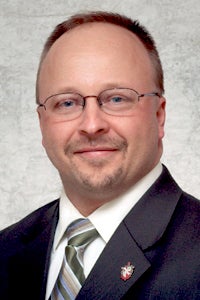AHS a step ahead in college-level classes; New guidelines not expected to affect school’s concurrent classes
Published 10:42 am Tuesday, September 15, 2015
Austin Public Schools won’t be initially affected by new requirements that could put many Minnesota high school students at risk of losing access to college-level classes.
New requirements for high school teachers who teach concurrent classes — classes taught in high schools where students earn college credit for free — say college-level instructors should hold a master’s degree in the field they teach or have a master’s degree in another field and 18 credits in the field they teach by September 2017.
The Austin district is aligned with Riverland Community College, which means teachers have to meet Riverland’s standards for concurrent classes, which already meet the new requirements.
Austin Public Schools Director of Human Resources Brad Bergstrom said the district has been following the requirements since he started as the high school principal in 2005, and possibly longer.
“We’re OK, because we’ve been in operation with this same set of ground rules,” he said.
According to High School Principal Katie Baskin, Austin has about 160 students take advantage of the concurrent classes each year, and about 380 students take advantage of both concurrent and AP classes. The high school offers five concurrent classes through Riverland and 12 AP classes.
Statewide, a growing number of students rely on dual-credit classes to earn college credits to cut their future higher education costs. Dual-credit classes were taken by 24,731 Minnesota students in 2014 — a 23 percent increase over five years. But hundreds of high school educators could soon be barred from teaching the classes, forcing students to take courses at local colleges or universities, or forgo them all together. The problem arose because the Higher Learning Commission in June updated its standards for college instructors.
Bergstrom said Austin shouldn’t need to replace any teachers because of the change. He said it has been difficult at times when a teacher leaves to find someone to replace them who has the master’s degree or the 18 credits in that area but Riverland has always worked with the district to find ways to keep the courses going while still following the requirements.
“Riverland Community College has been very helpful in helping us find creative ways to make that work so that we could keep the concurrent classes going here at the high school,” he said.
Bergstrom’s concern over the new requirements are that many schools will no longer be able to offer the concurrent classes, due to the lack of teachers who meet the requirements. Many districts require teachers to go through an interview process before they can teach concurrent classes, and Bergstrom said many of the teachers have taught their subjects for several years. He said much of the required curriculum for concurrent classes overlaps with high school level classes.
Baskin said the district has been lucky over the years to find teachers who are qualified to meet the standards, or willing to go back to school to get to the standards, yet she said it can be difficult.
“It’s very difficult not only to hire in rural Minnesota but to hire people with those qualifications,” she said.
This problem comes from a small candidate pool, which could get smaller throughout Minnesota with the new requirements. Because of the lack of teachers who will meet the requirements, many schools may not be able to offer the classes anymore, which means students will have to go to a college to take the classes during high school. While Bergstrom said this is a good option for many students, for others it is asking them to make a tough choice.
“It just makes the teaching pool get that much smaller, and to me it’s asking kids then to give up their high school experience to go to the college,” Bergstrom said.
“I think providing academic rigor to the [students] while they’re in high school is just so critical to their success post secondarily,” Baskin added.
Higher Learning Commission President Barbara Gellman-Danley said the group is trying to ensure dual-credit courses are taught at the highest level, and that schools will have time to comply. She said teachers should relish the opportunity to deepen their knowledge.
“You are never too old or too busy to forward your education,” she said.
Yet Bergstrom worried that there isn’t much incentive for many teachers to go back to school, especially if they have been teaching for many years. Many won’t receive a pay raise for the extra schooling, and it takes time and can be very expensive.
“I think it will deter people from wanting to do it,” Bergstrom said.
Minnesota Education Commissioner Brenda Cassellius also worried that it will become tough for administrators to find teachers for college-level high school classes.
“We already have a teacher shortage. … It will exacerbate those problems,” Cassellius said. “It’s not like teachers have the money or the time to go back to school and take another 18 credits.”
Bergstrom said since Austin has had the requirements in place, the district usually only replaces one or two teachers who retire or leave that position, but for many schools this will require four or five new teachers all at once. He said the recommendation is based off the idea that with a deeper knowledge of the content, the teachers will be better educators, yet Bergstrom pointed out that isn’t always true, as being a teacher is two points — knowing the content along with knowing how to reach and engage students.
—The Associated Press contributed to this story.





